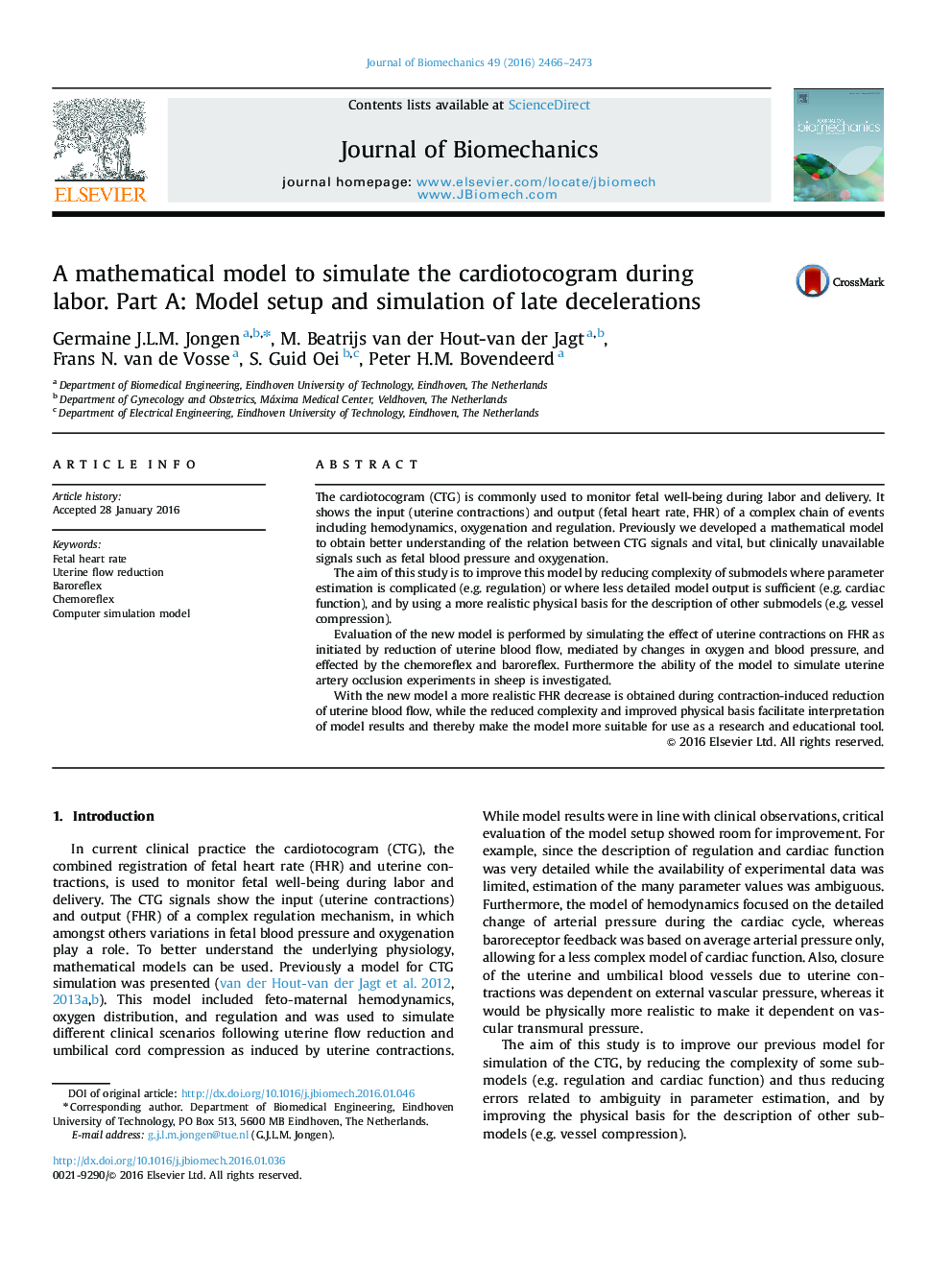| Article ID | Journal | Published Year | Pages | File Type |
|---|---|---|---|---|
| 5032410 | Journal of Biomechanics | 2016 | 8 Pages |
The cardiotocogram (CTG) is commonly used to monitor fetal well-being during labor and delivery. It shows the input (uterine contractions) and output (fetal heart rate, FHR) of a complex chain of events including hemodynamics, oxygenation and regulation. Previously we developed a mathematical model to obtain better understanding of the relation between CTG signals and vital, but clinically unavailable signals such as fetal blood pressure and oxygenation.The aim of this study is to improve this model by reducing complexity of submodels where parameter estimation is complicated (e.g. regulation) or where less detailed model output is sufficient (e.g. cardiac function), and by using a more realistic physical basis for the description of other submodels (e.g. vessel compression).Evaluation of the new model is performed by simulating the effect of uterine contractions on FHR as initiated by reduction of uterine blood flow, mediated by changes in oxygen and blood pressure, and effected by the chemoreflex and baroreflex. Furthermore the ability of the model to simulate uterine artery occlusion experiments in sheep is investigated.With the new model a more realistic FHR decrease is obtained during contraction-induced reduction of uterine blood flow, while the reduced complexity and improved physical basis facilitate interpretation of model results and thereby make the model more suitable for use as a research and educational tool.
